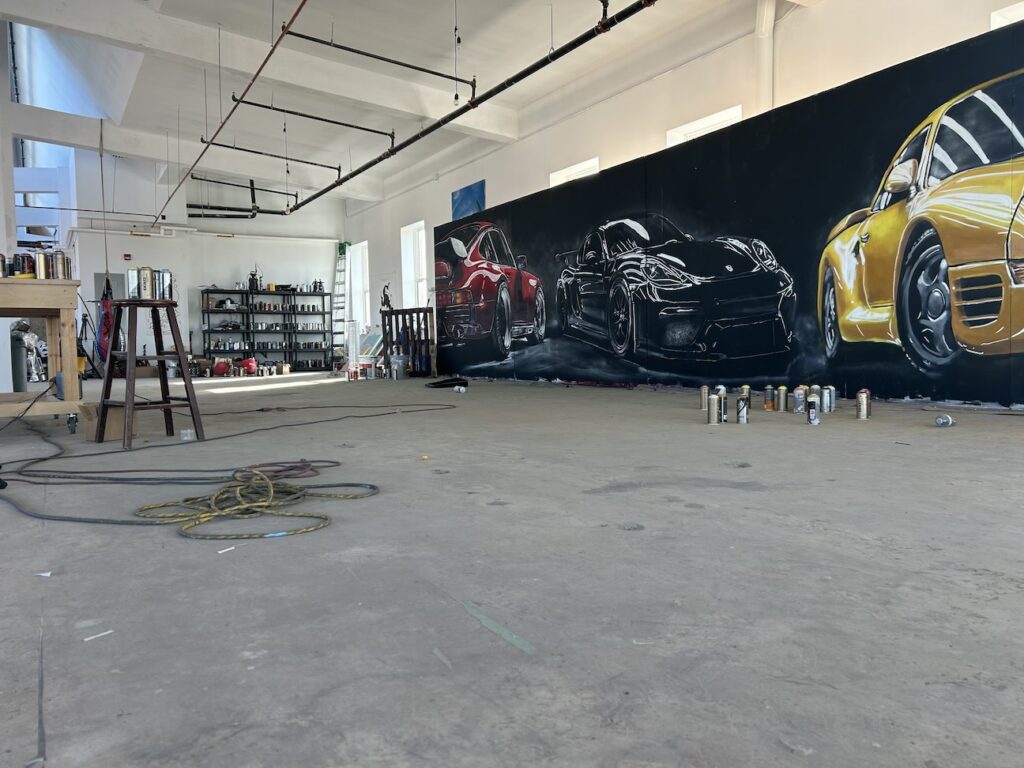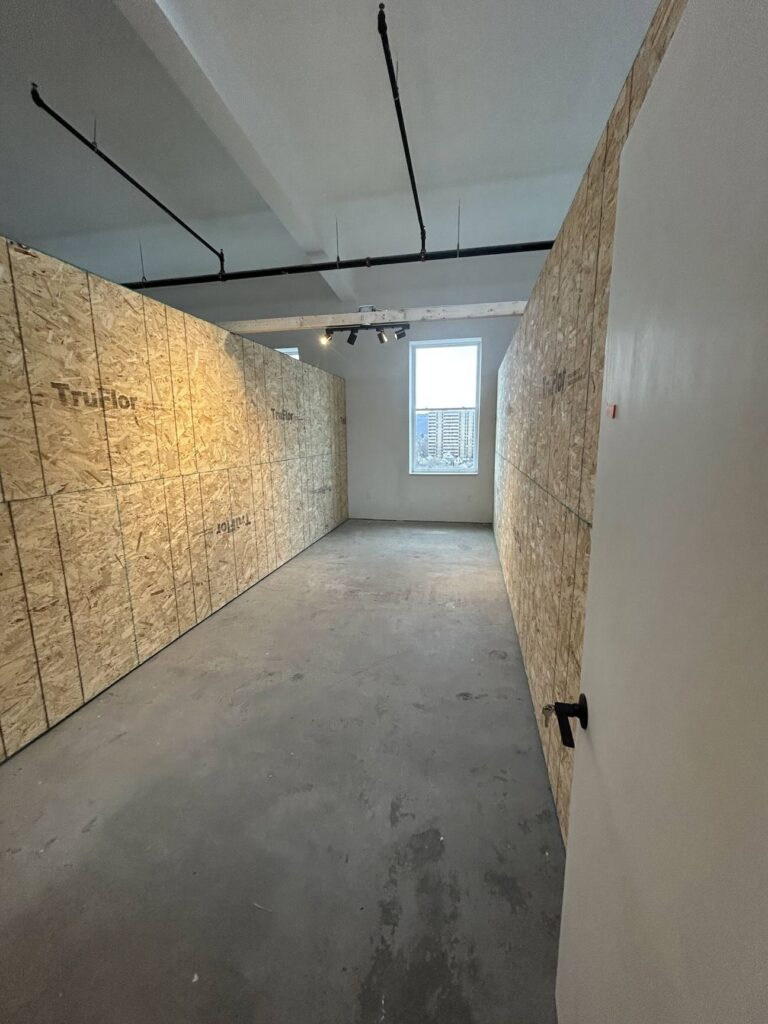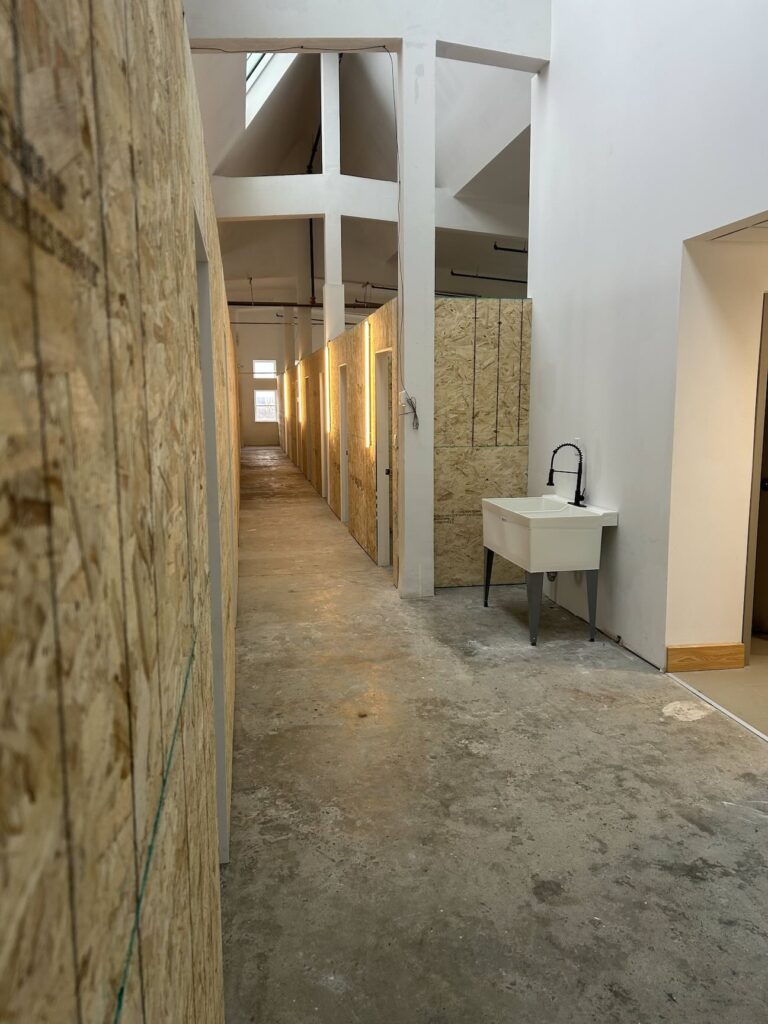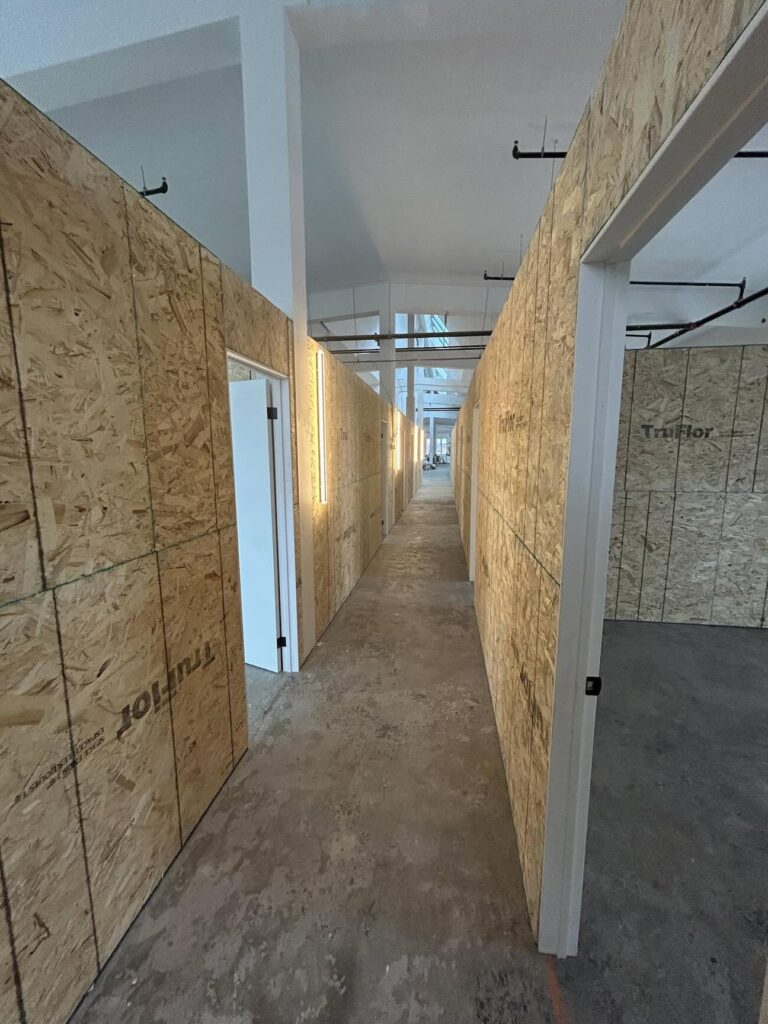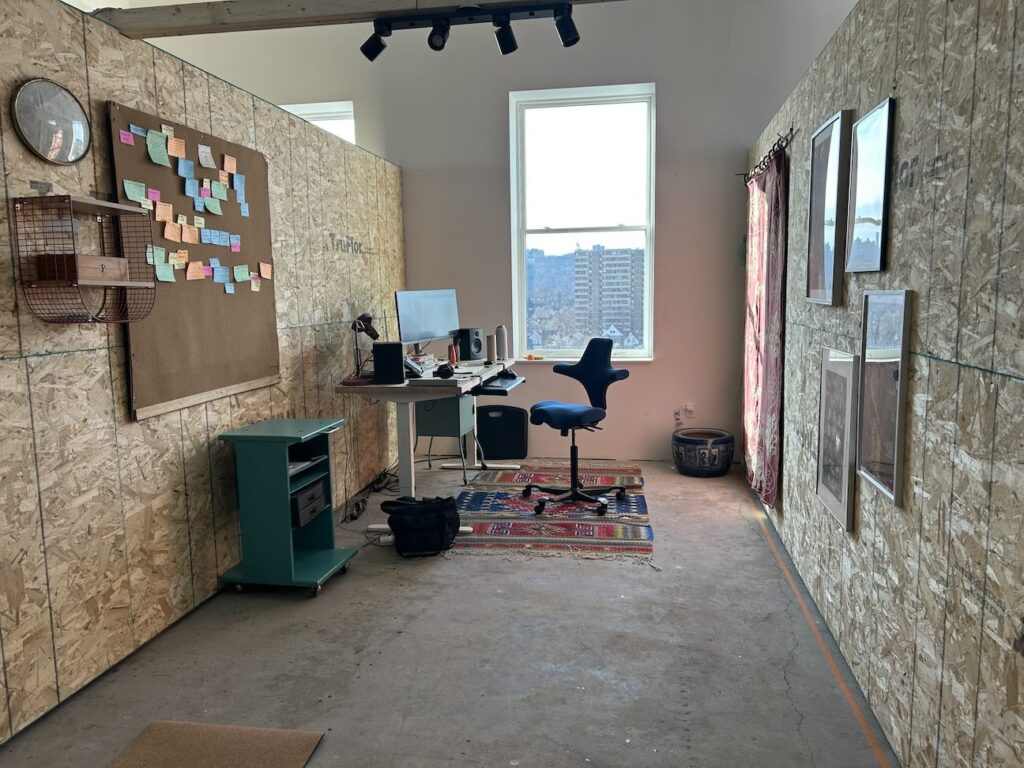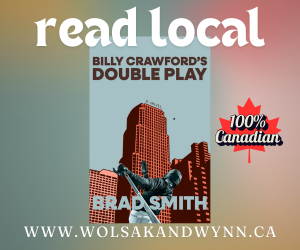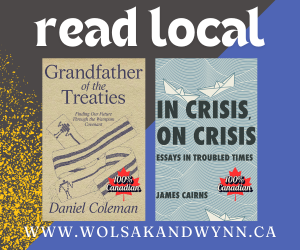Emerging from eviction at Westinghouse HQ
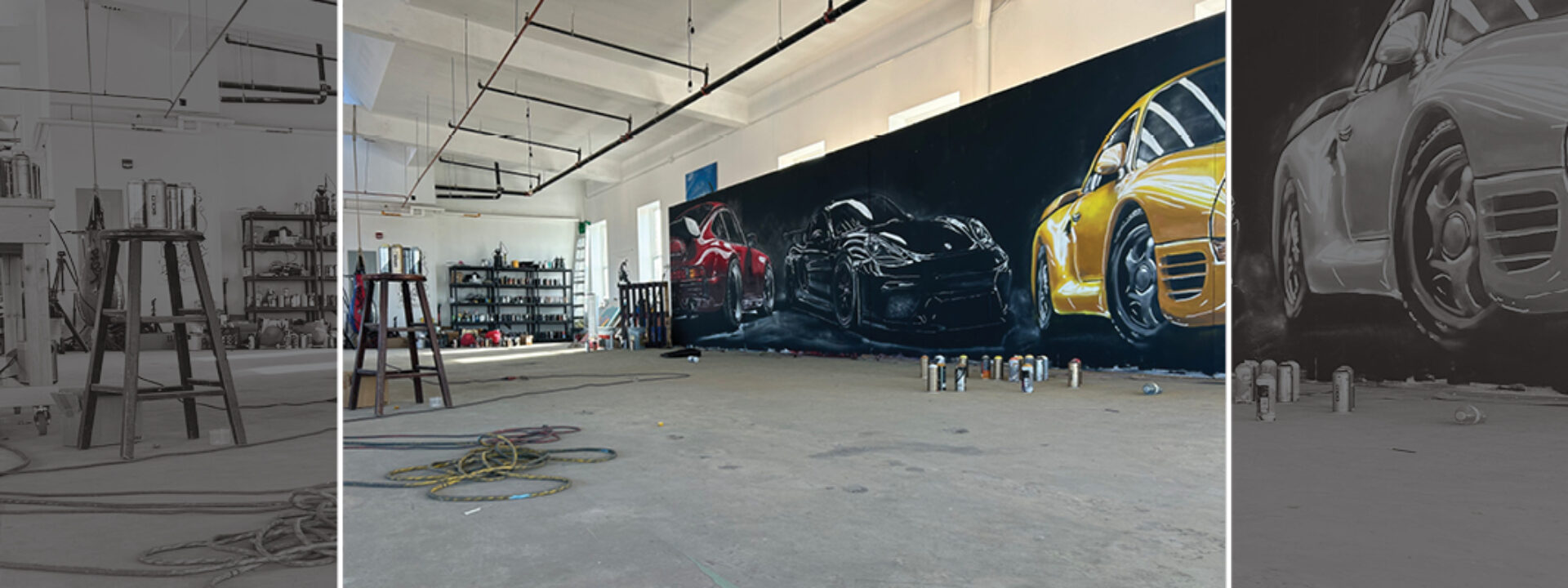
A group of artists have found a new home in studio spaces at the Sanford Avenue North office building after being kicked out of their previous building. But the solution may only be temporary.
Many Hamilton artists had grimly anticipated the hollowing-out of downtown creative spaces and unjust evictions as gentrification’s inevitable endgame. As a more recent arrival to the city, Melanie Cheung refused to accept these conditions and triggered a chain reaction that has made something good of an especially harsh blow to our artistic core.
29 Harriet St., a brick industrial beauty near Central Park once owned by Forge and Foster, had already caught Cheung’s eye after she moved to Hamilton from Montreal in late 2020. The former Felton Brush factory began offering studio sublets in 2023 through the artist-run Centre[3] in partnership with Aeon Film Studios, who were laying the foundations of a West Harbour creative campus. Cheung moved into an open-concept studio that year and made great strides in an abstract, atmospheric painting practice that had begun from her kitchen before being evicted with two weeks’ notice in August 2024, along with two dozen other artists, when ownership of the building abruptly changed hands.
“It still makes me so sad,” she admits, adding that stunned disbelief made it hard to move on. Driven in part by hope that the new, as-yet unknown building owners may extend their studio leases, Cheung reached out to local media and was astonished at how quickly The Hamilton Spectator sent a reporter to her studio. CBC Hamilton and CHCH also followed the story to its seeming conclusion in early October when Aeon’s West Harbour partnership with the City of Hamilton was officially dissolved.
That’s when Tyler Cowie of Westinghouse HQ took action. “I’m tired of seeing artists kicked out and displaced,” he explained while touring me through the freshly built studios on Westinghouse’s seventh floor, which welcomed 12 artists with one-year leases at the start of this new year.
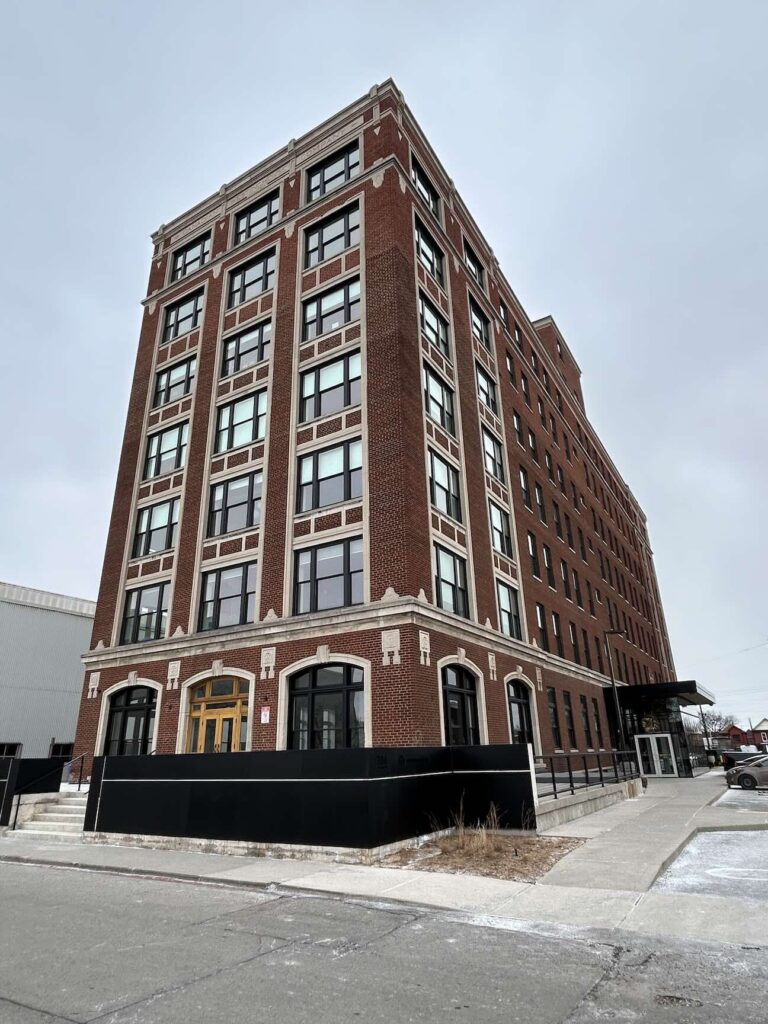
Cowie has been hosting graffiti artists on the building’s vacant upper floor while cultivating national businesses as tenants within the restored heights of Westinghouse HQ. Scott Martin and Clear Eyes Collective have since moved on, but Scott MacDonald’s practice space still occupies half the expansive seventh floor with a striking tableau of ceiling-high sketches among a clutter of spray cans.
The other half is now home to 14 utilitarian studios in raw contrast to the marble tile and pristine washrooms that define the building’s historic status and present-day ambition. Chipboard walls create a long corridor punctuated by stylish vertical light fixtures and unremarkable white doors. The first corner studio that Cowie revealed was jaw-dropping in its potential: worn terrazzo and concrete floors glowed with daylight pouring from high windows that frame a panorama of Hamilton from industry to escarpment.
Cheung recalls many kind offers in response to the media coverage for old shop spaces and abandoned offices that all fell short, but Cowie sparked her interest with this extraordinary space and his ability to turn around private work spaces in one month as promised, at below-market rates comparable to the affordable rents at Harriet Street. A shared kitchen and lounge will enhance the seventh floor’s studio facilities, which also provide all-hours elevator access and exhibition opportunities in Westinghouse HQ’s event spaces.
Cowie intends to add 10 more private studios while maintaining space for Scott MacDonald’s ongoing residency. However, these one-year leases represent the limits of the investor funds available to subsidize these studios, so Cowie is seeking further partnerships to sustain affordable rents for artists. As a private-sector experiment, these studios remain vulnerable to market demand that Cowie is nimbly navigating with a balance of investor support and open communication to maintain trust with his first tenants.
These include artists working in painting, textiles, sound and theatrical set design, most of whom were previously at Harriet Street. Alongside Cheung, artist and educator Nancy Benoy was among the first to move in. Her Harriet Street experience was particularly frustrating; she signed her six-month lease a mere two weeks before the eviction notice swiftly sent her on the move again. “It was such a time-waste.”
Benoy has navigated a range of studios in her career, from The Cotton Factory at 270 Sherman to a converted mud room in her Strathcona home to a recent residency at the Glenhyrst Art Gallery in Brantford. She had been drawn to Harriet Street as a social space where she could connect with peer artists while dedicating space and focus to her art, and she looks forward to finding this community at Westinghouse HQ and in the neighbourhood below, where a growing number of studios and creative sites can be found within walking distance.
The exiles of Harriet Street are accompanied by others who heard early rumours of this new space like Julianna Biernacki, a textile artist whose tufted rugs have become recognizable icons in Hamilton’s art community. After sharing an open-concept studio at The Cotton Factory, Biernacki is now delighted to have a private space where she can build a huge tufting frame that will allow her to make her largest works to date.
In the short time since moving in, Benoy has embraced the chipboard walls with a coat of white paint, started new work, and set up a windowside perch with a gorgeous green vintage chair snapped up from her neighbourhood’s Buy Nothing group. As an artist who makes brightly coloured assemblages from discarded wood off-cuts and other unwanted industrial remnants, Benoy knows how to pick up the pieces and give better, brighter shape to what remains.
